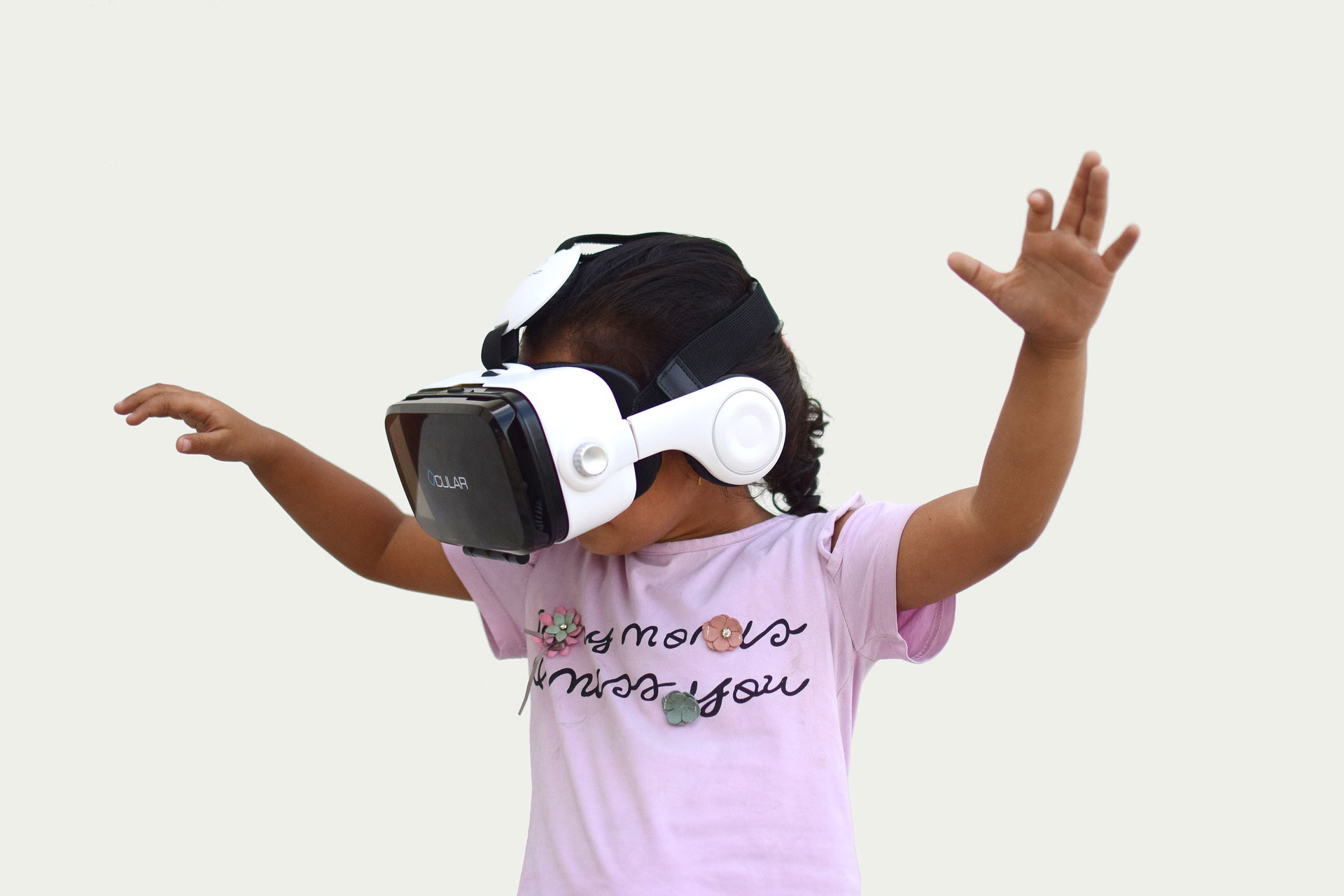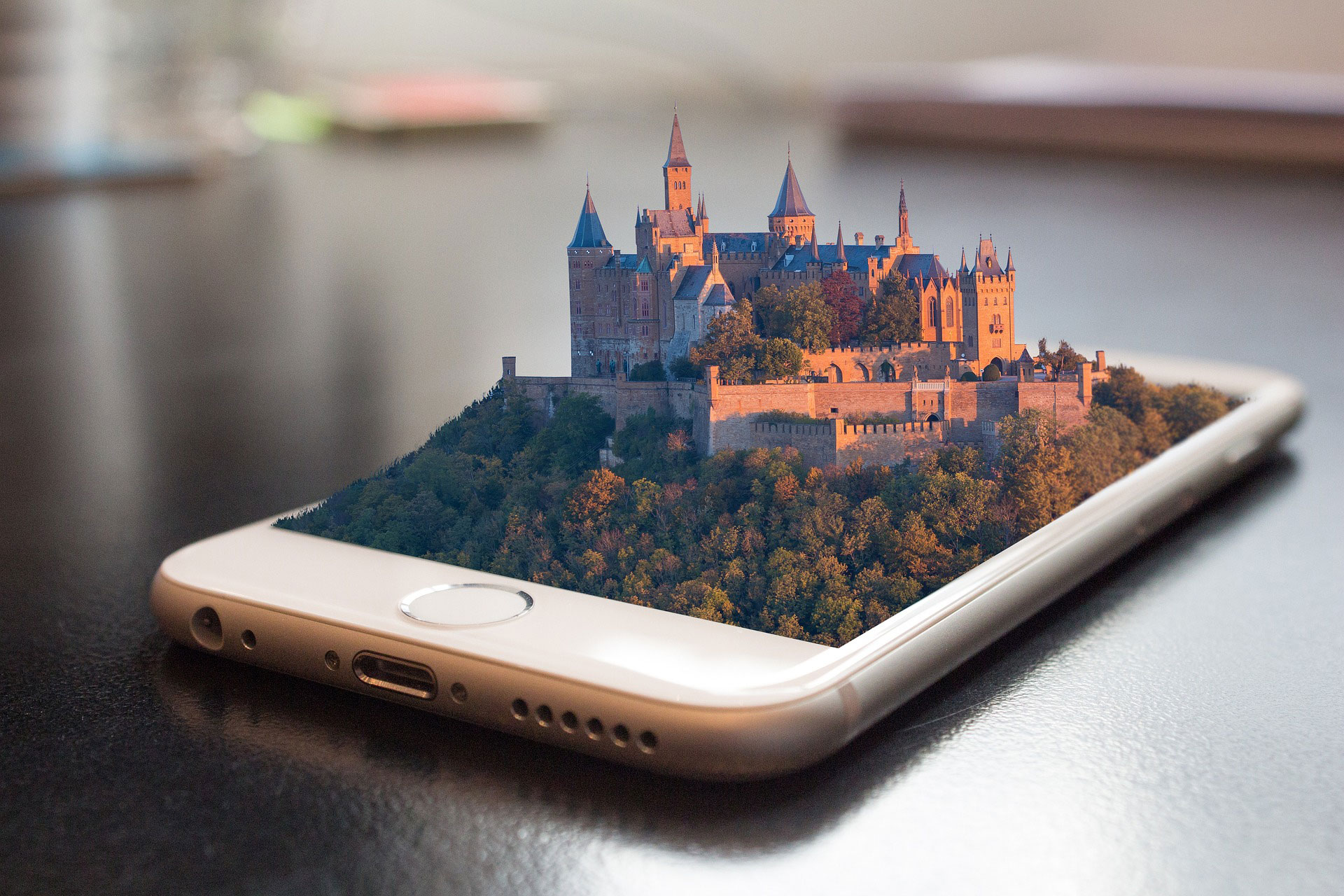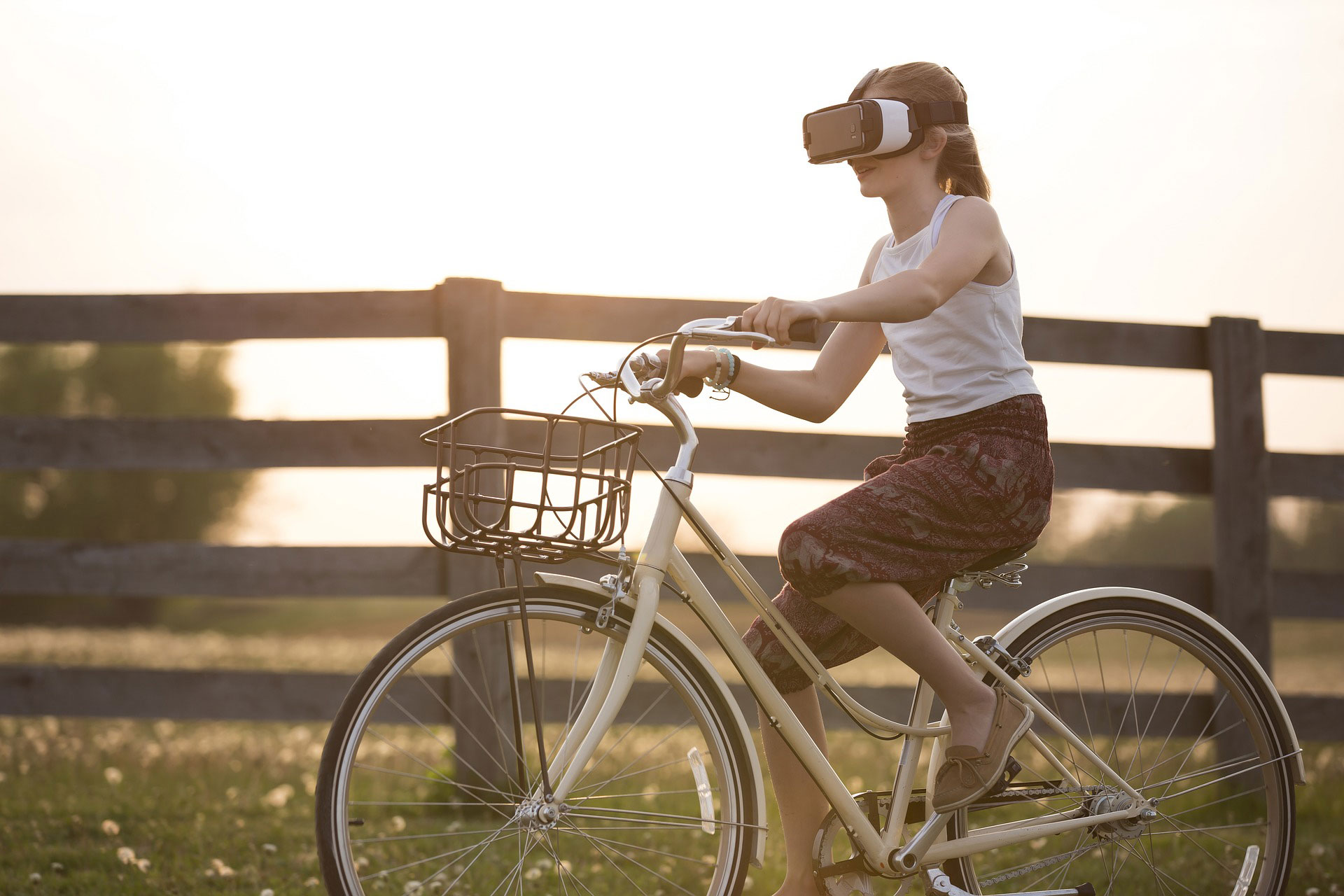VR APPS ONLINE!

The most exciting and advanced technologies for audiovisual perception are Virtual Reality, Augmented Reality, Mixed Reality and Augmented Virtuality. Many experts agree that they will make a lasting difference to our everyday lives.
Nevertheless, these terms still cause confusion, especially when it comes to understanding how they are different from each other. In this article, we explain what is behind all of this and how VR, AR and MR differ from each other.
Table of Contents
We speak of Virtual Reality when the user immerses themselves in a completely virtually generated experience. These include, for example, computer-generated worlds as known from video games, or 360-degree vidoes where real places are depicted. To make these videos, real places are filmed or photographed using 360° cameras.
What makes this technology so exciting is the high levels of immersion that such a reality can create. The user immerses themselves into another world using their two most important senses: sight and hearing. In an ideal case, the audiovisual stimuli can currently be generated with the aid of head-mounted displays in conjunction with headphones. They can also be called up in a slimmed-down form on a smartphone or computer screen.
VR is all about audiovisual stimuli. The devices currently available on the market that offer the best experience are VR glasses produced by manufacturers such as Oculus, HTC or Sony. Most of these devices require a powerful PC (Oculus Rift, HTC Vive) or a video game console (Sony VR).
However, there are first models available that work in a fully standalone manner, such as the Oculus Quest. Entry models that enable you to take your first steps in the virtual world already work in combination with smartphones (Samsung VR, Google Daydream).
Nevertheless, devices that integrate other senses into the experience are also already being developed. An example of this is the Tesla Suit, into which haptic feedback and biometric elements have been integrated.
We tested the best VR glasses in 2019 for you. So, if you’re looking for the right device for you, take a look at our blog!
AR, VR and MR are no longer just future technologies, as we are already successfully using them in many ways today.
However, there are also some areas and industries that still want to be captured by pioneering technologies.
We have selected a few examples for you where Virtual Reality is already being used:
VR gaming has the advantage that you don’t just sit in front of the screen; you are part of the game and can interact with your environment. Immersion creates a completely new gaming experience, one that was previously unknown from PC and gaming consoles.
Interested?
Then take a look at the list of the best VR games from 2019!
With 360° movies, you’re not just there; you’re right in the middle of the action! In its own VR media library , ZDF uses the opportunity of producing 360° films to take viewers on a journey to the places being reported. This way, you can not only watch movies, you can also experience them directly.
There is still a lot of untapped potential that needs to be exploited, especially in the area of immersive learning. Nothing remains so much in people’s minds, regardless of their age, as something they experienced themselves. It’s not called “Learning by doing” for nothing!

Thanks to new technology, we no longer have to rely on children remembering dinosaurs from an inanimate sheet of paper. Instead, we can virtually send them back in time to give them a first-hand experience of what dinosaurs looked and sounded like.
It should be noted at this point that the manufacturers of VR glasses currently recommend a minimum age of 12-13 years for the use of VR glasses. They are also already working on child-friendly versions, which will enable them to support children even earlier through immersive learning.
We can also help adults prepare for their new job or show them how to behave in emergency situations by simulating the situation in a virtual environment.
You can find out more about this topic in our extensive article on immersive learning.
Regardless of whether you want to reach customers at home in their living room, present VR applications at trade fairs or facilitate a customer discussion with a virtual experience: Virtual Reality is finding its way into marketing and taking customers by storm.
For example, you can see here how Audi uses Virtual Reality to offer better advice to its own customers:
It goes without saying that this is only a small summary of all the possible use cases. The list of successful VR applications today is long and continues to grow!
What is Augmented Reality in comparison to Virtual Reality? Another word for “augmented” is “embedded”. You could say Augmented Reality is Virtual Reality embedded in the real world.
What does this look like?
In AR, elements of Virtual Reality are blended into the participant’s real field of vision in such a way that the user’s environment is taken into account.
In most cases, these elements of Virtual Reality are computer-generated objects, information or graphical elements. In the majority of cases, you wear data glasses that allow you to see virtual objects in your own environment.

Do I need an extra device to use AR applications?
Alternatively, AR applications can also be used on tablets or smartphones. In this case, the camera on the back records your environment and shows it to you on the display. On your display, you can then view, move, and interact with items in the application.
The first AR applications accessible to the general public came onto the market in the past decade with the launch of the smartphone. Among the best-known AR smartphone apps in recent years are the games Pokémon GO and Harry Potter: Wizards Unite by Niantic.
The first meaningful applications were developed with the spread of smartphones and mobile internet with data rates that enabled graphical representations bound to locations (Geocaching).
Thanks to the rapid technological development of smartphones and the constantly improving data rates in digital radio, the first AR apps also became a commercial success. It was only years later that further hardware for AR applications became ready for the market. To date, however, this has largely been in the B2B sector.
In 2012, the first mass-market product, Google Glass, was launched. Almost two years later, the product was available to consumers, but was only available in the USA, and even there it was as an open beta version.
A few years later, Microsoft launched the Hololens: AR-capable data glasses, which were previously only available as a developer version and designed for the business market (commercial suite).
The first commercially successful AR application was Pokémon Go. The game is available in the Android Play Store and the Apple App Store and was released in 2016 by the developer Niantic. With over 1 billion downloads, Pokémon Go was not only a resounding success; it also got entire generations of players moving. In the game, users hunt for Pokemons that are spread across the globe.
The fantasy creatures can be spotted in public places such as parks, sidewalks or car parks. All you have to do is open the app on your smartphone and look around with your camera. With a little luck, you will discover and capture one of the virtual creatures on a nearby park bench. Over 100 million players across the globe took part in the hunt for the Pokemons, making Pokemon Go one of the most successful AR games.
However, the large number of players who gathered outside one place to catch a coveted Pokemon also caused some problems. In the summer of 2016, when the hype about the game was at its peak, traffic chaos increased in cities around the world, with hundreds to thousands of players spontaneously gathering in one place.
In medicine, AR applications help students to visualize or describe complex medical conditions and treatment methods.
For example, 3D representations of the brain are tested, which can be “set” over the real brain of a patient. This can also be of great benefit to surgeons. Since the brain is not mobile, exact coordinates can be determined and displayed in real time. This is useful, for example, as it enables precise interventions in the millimeter range.
Even in the most controversial military field, the use of AR applications is considered to have great potential. For soldiers or pilots, data can be displayed in the field of vision via data glasses or a so-called head-up display. This data could contain important and life-saving information that could determine the success of a mission.
AR technology is already being used today for complex repairs, such as those carried out on machines. Specialists can benefit from AR, if, for example, repair descriptions or components can be precisely assigned using AR labels. If the information is transmitted directly to the data glasses, both hands remain free to use.
The term Mixed Reality is often heard and used in connection with Virtual Reality and Augmented Reality. In contrast to the other two terms, MR is not a separate technology, but rather an umbrella term.

In the mid-90s, Mixed Reality was described by the reality-virtuality continuum. There are two extremes in this continuum: on the one side, there is the real environment. On the other, there is a computer-generated environment. Mealy described this is a similar way in 2018:
“Mixed Reality combines environments or systems that mix an end user’s natural perception with an artificial (computer-generated) experience.”
According to these definitions, all Virtual Reality and Augmented Virtuality applications fall under the generic term Mixed Reality, since the aspects of the virtual world are integrated into the real world and thus take place between the two extremes of the real world and Virtual Reality.
And then there’s also Augmented Virtuality…
Another form of Mixed Reality is Augmented Virtuality, which is particularly exciting in the commercial sector. Here we are speaking about applications in which objects can be integrated into a virtual environment. Examples of this include furniture that can be positioned in virtual rooms or the virtual fitting of clothes, in which the user is integrated into the virtual world.
In the overall spectrum of Mixed Reality, Augmented Reality would be assigned to the real environment, whereas Augmented Virtuality would be assigned to the virtual environment.
Virtual Reality, Augmented Reality, Augmented Virtuality and Mixed Reality represent areas of a relatively new technological development that has evolved and spread rapidly in recent years. As you have already seen in our examples, there is already an abundance of exciting applications in different areas.
However, there is still lots of potential in the technologies that has not yet been fully exploited. Various industries are slowly but surely discovering the opportunities these technologies offer them and the added value that is generated by using VR, AR, AV and MR. Even if we just take the areas of entertainment, medicine and military mentioned above, the potential uses we have identified at the moment are just the beginning and only give us a glimpse into how these technologies will develop in the future.
In the future, technological developments will probably go hand in hand with the further development of these areas and produce applications that enrich people’s lives.
Register for free and start editing!
Whatever you are telling in this article it’s really great. But according to my view, Virtual reality augmented reality and mixed reality represent the new advanced technologies for that we can get the world’s news, videos.